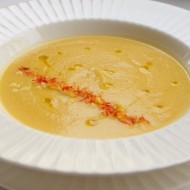Where to add saffron: beneficial properties and use of seasoning
Content
What is saffron
The seasoning is the dried pistils of the sowing crocus (Crocus sativus), a perennial tuberous plant of the Iris family. It looks like thin threads of a burgundy red or dark brown hue. The spice has a rich spicy aroma and a bitter honey taste. Its high cost is due to several factors:
- flowering, which begins in early spring, lasts only 2-3 days;
- collection is done manually;
- to get a kilogram of seasoning, one and a half hundred flowers are needed;

The collected raw materials are sorted out, separating the stigmas from the petals, and then dried at a temperature of +50 ° C. After drying, the saffron is sorted. To do this, the spice is immersed in water and only pistils floating on the surface are selected. Those that drowned are also sold, but in a lower class.
Where and how it grows
The spice is native to the Middle East, from where it soon spread across the globe. In Europe, Switzerland has long been involved in the production of seasoning, but now Iran has taken the lead in the market. India Saffron (Indian), which is grown on the plantations of Kashmir, is recognized as the highest quality and most expensive saffron.
According to the botanical description, the seed crocus does not have a stem. Straight from the bulb, the plant throws out a flower and long needle-like leaves, growing up to 10 cm. 1-3 flowers of a lavender or pinkish-purple hue with orange-red threadlike stigmas grow on the tuber.
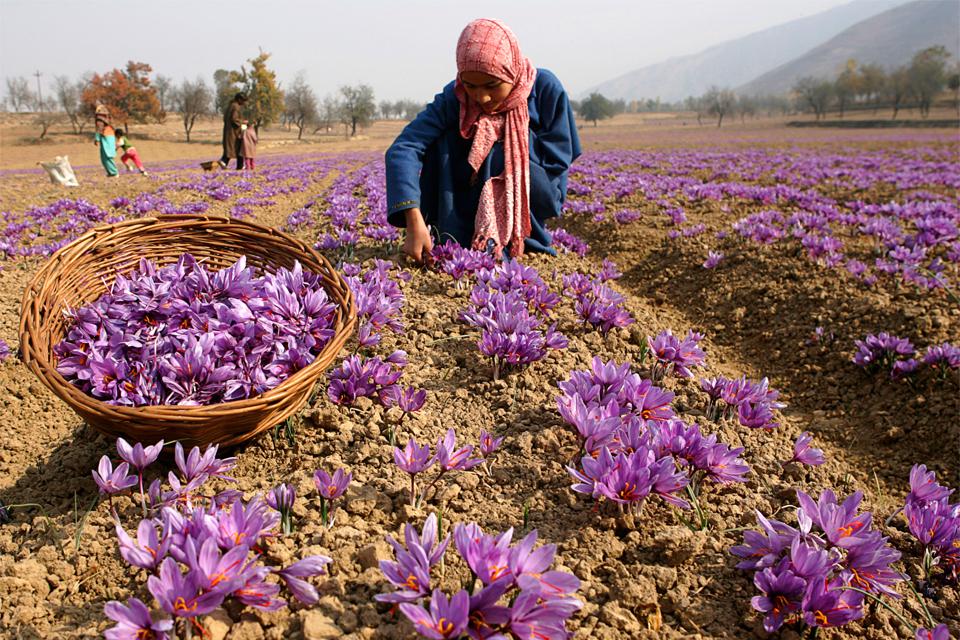
Chemical composition
A spicy spice is appreciated not only for its original taste and aroma. Science has officially recognized the usefulness of its biochemical composition:
- B vitamins;
- ascorbic acid;
- essential oils;
- tannins;
- flavonoids;
- aldehydes;
- glucose;
- riboflavin;
- a nicotinic acid;
- alpha and beta carotene;
- trace elements (K, Ca, P, Fe, Na, Zn, Mg, Cu).
Beneficial features
Oriental medicine considers saffron to be a cure for most of the known diseases, and the regular use of spices is a method of healing and strengthening the whole body. So, among the healing properties of spices are called:
- acceleration of metabolism;
- elimination of toxins;
- stopping the development of cancer cells;
- removal of pain syndromes;
- strengthening the heart muscle and vascular walls;
- stabilization of the menstrual cycle;
- normalization of the central nervous system;
- healing effect;
- hepatoprotective properties;
- antihistaminic properties;
- treatment of diseases of the genitourinary system;
- elimination of dermatological problems;
- improvement of the digestive tract.
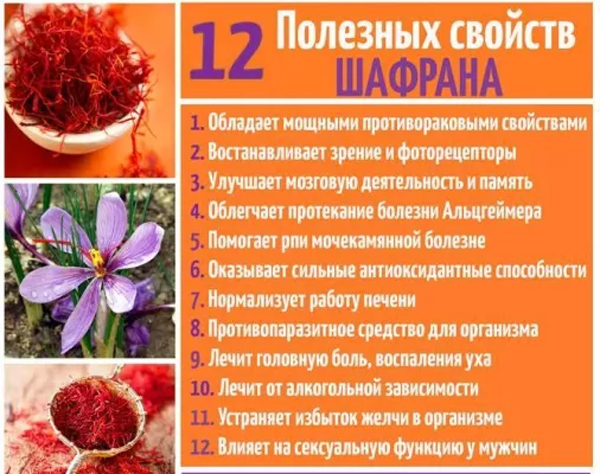
Nutritional value and calorie content
Royal seasoning is a high-calorie product. So, 100 g of ground spice contains about 315 kcal. In addition to the mass of nutrients, the spice also includes:
- proteins - 14%;
- fats - 7%;
- carbohydrates - 79%.
Video "Saffron: Properties and Applications"
This video highlights the benefits and uses of the spice.
How saffron is used in cooking
Since the spice smells very strong and gives the dishes a rich taste, its consumption is quite small. The spice is widely used in almost all cuisines of the world. It is especially appreciated in the East, the Mediterranean coast, in southern European countries. Saffron is added to rice, meat, seafood, poultry. It also goes well with vegetables, soups and various dressings. Confectioners are very fond of seasoning, adding it to baked goods, desserts or drinks.
Sometimes in cooking they use a substitute for the original spice - turmeric or safflower.
- Saffron tea
- Using seasoning for cooking fish
- Spicy Corn Cream Soup
There are so many recipes using saffron that, describing them, you get a real multivolume. One of the brightest dishes - cabbage appetizer - belongs to Korean cuisine:
- half a head of cabbage is cut into large slices, and then placed in hot water for a quarter of an hour;
- separately bring to a boil 1 liter of purified water, where then 2 tbsp. l. granulated sugar;
- add 20 g of spices, a pinch of dry cilantro and coriander, two garlic cloves, ground pepper, salt;
- before removing from the stove, pour in 20 ml of table vinegar;
- sauté one finely chopped onion in olive oil, which is then combined with brine;
- After boiling the marinade a little, pour cabbage with it and put it in the refrigerator for 24 hours.
An oriental milk drink turns out to be no less tasty:
- a quarter liter of milk is brought to a boil three times over medium heat;
- add a pinch of saffron there, 1 tsp. honey, a small piece of butter;
- stir thoroughly until the ingredients are completely dissolved;
- before use, it is poured several times from one glass to another.
The use of seasoning in traditional medicine
Eastern medicine loves to use saffron, preparing various medicines on its basis:
- Almost all problems will be relieved by an infusion prepared from 15 stigmas steamed with 250 ml of boiling water. Drink it one glass before each meal.
- To strengthen the immune system, 200 ml of warm milk or water with a pinch of spice is drunk daily.
- Cranberry juice will help get rid of cystitis, which is diluted with water and a little spice is added. Take a drink three times a day before meals.
- To remove toxins, the following tincture is prepared: ten raisins are steamed with 100 ml of boiling water, having previously added three stigmas. Insist 8 hours, and then drink twice a day for two months.
The use of spices in cosmetology
Manufacturers of cosmetics often add saffron to their products. Such products are not cheap, but they help to slow down aging and improve the condition of the skin, hair and nails. Regular use of such funds has the following effect:
- moisturizes;
- softens;
- gives elasticity to the skin;
- evens out the tone;
- brightens;
- gently cleans;
- strengthens nails;
- prevents breakage and hair loss.
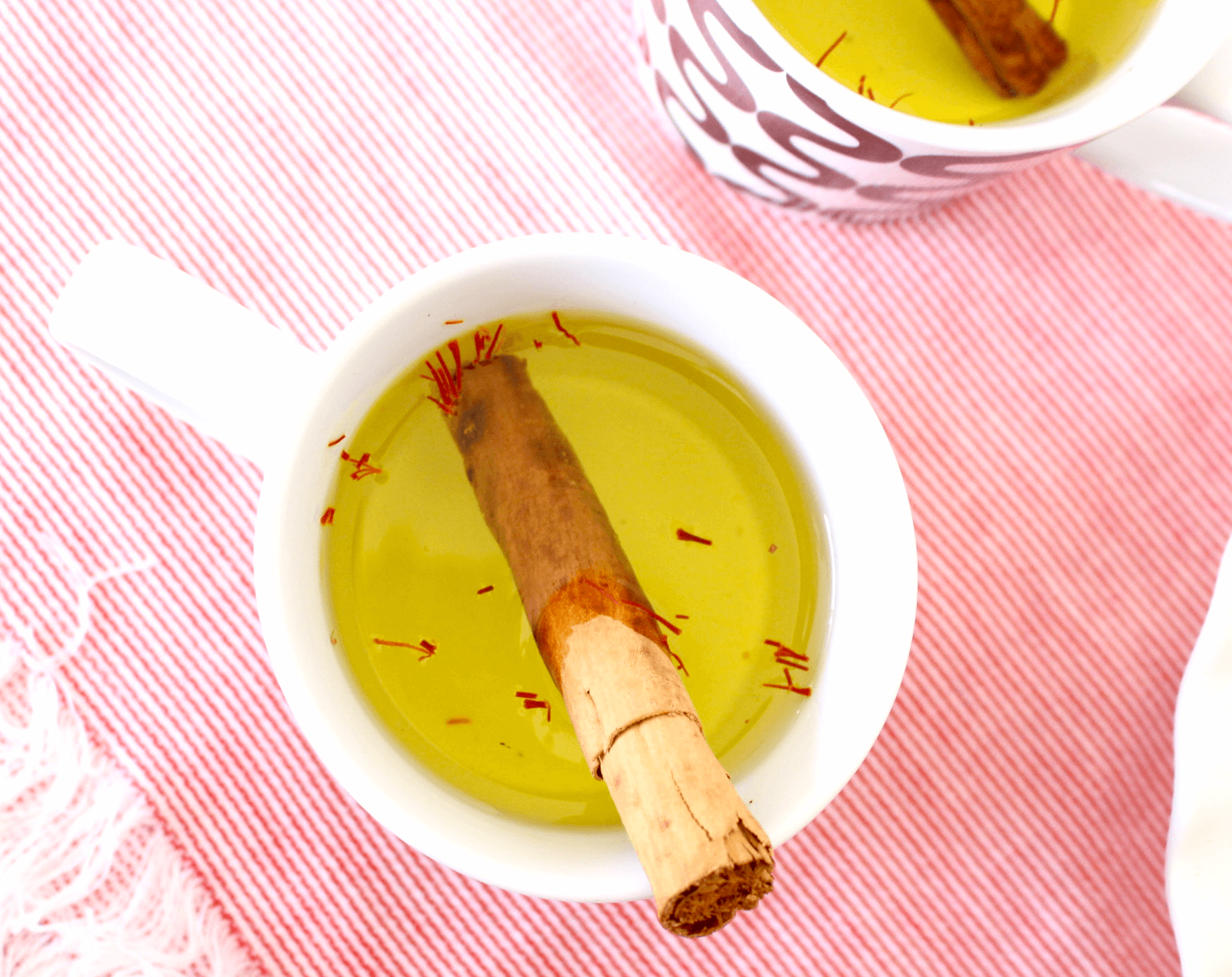
An effective anti-cellulite agent is a natural corn grits scrub. The main ingredient is mixed with 20 ml of liquid honey, 1 tbsp. l. ground oatmeal, 5 g of cinnamon powder, 1 tsp. ginger, 2-3 spicy stigmas. Add a couple of drops of lemon, orange and fennel essential oils, and then mix thoroughly. Apply the product once a week, applying with circular massage movements on a steamed clean body.
To refresh the skin and give it a healthy look, apply a saffron mask. To do this, combine 1 tsp.fat sour cream, the same amount of liquid honey and a little spice. After stirring thoroughly, apply in an even layer on the face. After 20-30 minutes, wash off with warm water.
How to store saffron properly
Subject to all conditions, the shelf life of the seasoning is two years. The place should be dark, dry, away from heat sources. It is better to take a container for spices, glass, opaque, with a sealed lid so that foreign odors do not penetrate inside. In order for the spice to retain its aroma for a long time, a powder is made from the stigmas or insisted on alcohol, pouring one part of saffron with ten parts of alcohol.
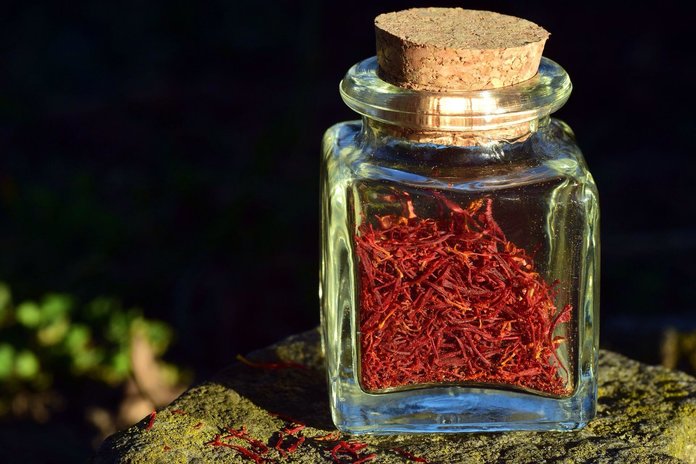
Contraindications and possible harm
As beneficial as saffron is, it can be poisonous in overdose. The allowed annual rate is as little as one gram of the spice. Certain groups of people should refrain from using royal seasoning:
- pregnant women;
- women during lactation;
- diabetics;
- people with cardiovascular disease;
- hypertensive patients;
- children under three years old.
The first sign of poisoning is a violation of the heart rhythm against the background of nervous overexcitation. If these symptoms are detected, it is recommended to clear the stomach, drink a sorbent and seek medical advice.
The cure for all diseases, as saffron is called in the East, is not for nothing that Europeans nicknamed the royal spice. It has been used for a long time in various fields from cooking to cosmetology. Its benefits have been proven by official medicine, and its role in the development of world cuisines is truly impressive.



